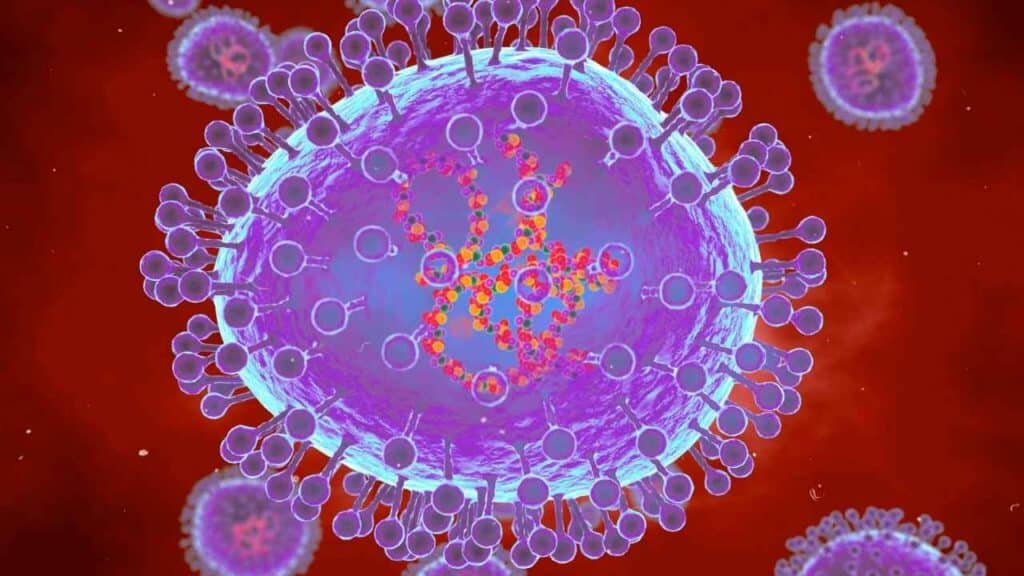China is currently grappling with a surge in respiratory infections, primarily caused by the human metapneumovirus (HMPV). This outbreak has raised concerns due to its rapid spread and similarities to the early stages of the COVID-19 pandemic. Reports of overcrowded hospitals and overwhelmed healthcare systems have sparked fears of a potential new global health crisis.
What is HMPV?
Human metapneumovirus (HMPV) is a respiratory virus discovered in 2001. It belongs to the Pneumoviridae family, the same family as the respiratory syncytial virus (RSV). HMPV typically causes upper and lower respiratory infections, with symptoms resembling those of the common cold or flu.
Key Facts About HMPV
- Discovery: First identified in 2001 by Dutch researchers
- Family: Pneumoviridae, same as RSV
- Seasonality: Circulates primarily in winter and spring
- At-risk groups: Young children, older adults, and immunocompromised individuals.
Symptoms of HMPV Infection
The symptoms of HMPV infection are similar to those of other respiratory illnesses, making it challenging to distinguish without proper testing. Common symptoms include:
- Cough
- Fever
- Nasal congestion
- Shortness of breath
- Wheezing
In severe cases, HMPV can lead to complications such as bronchitis or pneumonia, particularly in vulnerable populations.
Top 10 Global Crises the World Witnessed in 2024: A Year of Unprecedented Challenges
Incubation Period and Duration
- Incubation period: 3-6 days
- Symptom duration: Varies depending on severity, typically 2-5 days for mild cases.
How HMPV Spreads
HMPV transmission occurs through methods similar to other respiratory viruses:
- Respiratory droplets from coughing and sneezing
- Close personal contact (e.g., shaking hands, touching)
- Touching contaminated surfaces and then touching the mouth, nose, or eyes.
The virus can survive on surfaces for several hours, making proper hygiene crucial in preventing its spread.
High-Risk Groups
While HMPV can affect individuals of all ages, certain groups are at higher risk of severe complications:
- Young children, especially those under 5 years old
- Older adults, particularly those over 65
- Individuals with weakened immune systems
- People with pre-existing respiratory conditions (e.g., asthma, COPD).
Current Situation in China
Reports from China indicate a significant increase in respiratory infections, with HMPV playing a prominent role. The outbreak has led to:
- Overcrowded hospitals and healthcare facilities
- Increased demand for medical resources
- Concerns about the potential for a new pandemic.
Official Response
Despite the alarming reports on social media, it’s important to note that:
- Chinese health authorities have not declared a state of emergency
- The World Health Organization (WHO) has not issued any warnings or declared a pandemic.
The National Disease Control and Prevention Administration in China has implemented a monitoring system for pneumonia of unknown origin, aiming to improve preparedness for respiratory diseases during the winter months.
Countdown to 2025 Begins: 7 Fascinating Facts About the Iconic Times Square Ball Drop Tradition
Diagnosis and Testing
Diagnosing HMPV typically involves laboratory tests to detect the virus. The CDC recommends the following methods:
- Nucleic acid amplification tests (NAATs) to detect viral genetic material
- Immunofluorescence or enzyme immunoassays to identify viral antigens.
Routine testing for HMPV is not common unless symptoms are severe or there’s an outbreak.
Treatment Options
Currently, there is no specific antiviral treatment or vaccine for HMPV. Management focuses on alleviating symptoms and providing supportive care:
- Rest and hydration
- Over-the-counter medications for pain, congestion, and fever
- In severe cases, hospitalization may be required for oxygen therapy or intravenous fluids.
Prevention Measures
To reduce the risk of HMPV infection and other respiratory illnesses, health authorities recommend:
- Frequent handwashing with soap and water for at least 20 seconds
- Avoiding touching the face with unwashed hands
- Wearing masks in crowded places during outbreaks
- Staying home when sick to prevent spreading the virus
- Regularly cleaning frequently touched surfaces.
Global Implications and Concerns
The HMPV outbreak in China has raised concerns about the potential for another global pandemic, especially given the similarities to the early stages of the COVID-19 outbreak. However, it’s important to consider the following:
- HMPV is not a new virus, unlike SARS-CoV-2
- The current outbreak may be part of a natural resurgence of respiratory illnesses post-COVID lockdowns
- Health authorities are more prepared and vigilant following the COVID-19 experience
Comparison with COVID-19
| Aspect | HMPV | COVID-19 |
|---|---|---|
| Discovery | 2001 | 2019 |
| Transmission | Respiratory droplets, close contact | Respiratory droplets, aerosols, close contact |
| Severity | Generally mild, severe in high-risk groups | Ranges from asymptomatic to severe |
| Vaccine availability | No | Yes |
| Global impact | Limited outbreaks | Pandemic |
When to Seek Medical Attention
While most HMPV infections resolve on their own, it’s important to seek medical advice if:
- Symptoms persist or worsen after a few days
- A fever lasts more than three days without improvement
- There are signs of respiratory distress (e.g., difficulty breathing, bluish skin)
- The infected person has pre-existing conditions that increase the risk of complications.
Future Outlook and Research
As HMPV continues to be a concern, ongoing research is focused on:
- Developing effective antiviral treatments
- Creating vaccines to prevent HMPV infections
- Improving diagnostic tools for rapid and accurate detection
- Understanding the long-term effects of HMPV infections, especially in children
Conclusion
The HMPV outbreak in China serves as a reminder of the ongoing challenges posed by respiratory viruses. While the situation warrants attention, it’s crucial to rely on verified information from health authorities rather than unconfirmed social media reports. By staying informed, following preventive measures, and maintaining vigilance, we can work together to mitigate the impact of HMPV and other respiratory illnesses.As we continue to monitor the situation, it’s essential to remember the lessons learned from the COVID-19 pandemic and apply them to our response to emerging health threats. Global cooperation, transparent communication, and robust public health measures will be key in addressing the HMPV outbreak and preventing future pandemics.

